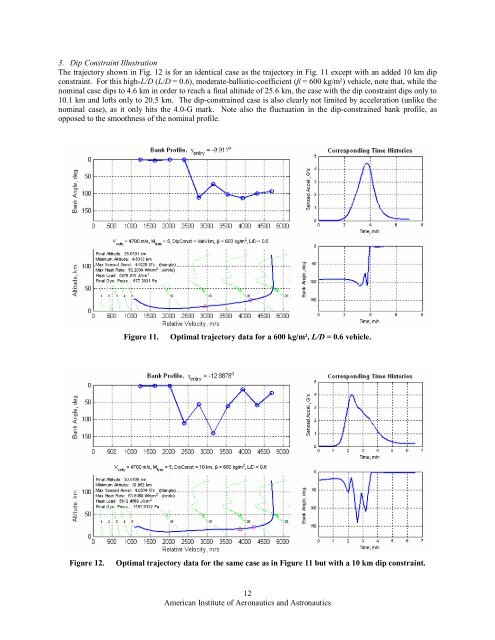Mars Entry Bank Profile Design for Terminal State Optimization
Mars Entry Bank Profile Design for Terminal State Optimization
Mars Entry Bank Profile Design for Terminal State Optimization
Create successful ePaper yourself
Turn your PDF publications into a flip-book with our unique Google optimized e-Paper software.
3. Dip Constraint Illustration<br />
The trajectory shown in Fig. 12 is <strong>for</strong> an identical case as the trajectory in Fig. 11 except with an added 10 km dip<br />
constraint. For this high-L/D (L/D = 0.6), moderate-ballistic-coefficient (β = 600 kg/m²) vehicle, note that, while the<br />
nominal case dips to 4.6 km in order to reach a final altitude of 25.6 km, the case with the dip constraint dips only to<br />
10.1 km and lofts only to 20.5 km. The dip-constrained case is also clearly not limited by acceleration (unlike the<br />
nominal case), as it only hits the 4.0-G mark. Note also the fluctuation in the dip-constrained bank profile, as<br />
opposed to the smoothness of the nominal profile.<br />
Figure 11.<br />
Optimal trajectory data <strong>for</strong> a 600 kg/m², L/D = 0.6 vehicle.<br />
Figure 12.<br />
Optimal trajectory data <strong>for</strong> the same case as in Figure 11 but with a 10 km dip constraint.<br />
12<br />
American Institute of Aeronautics and Astronautics
















